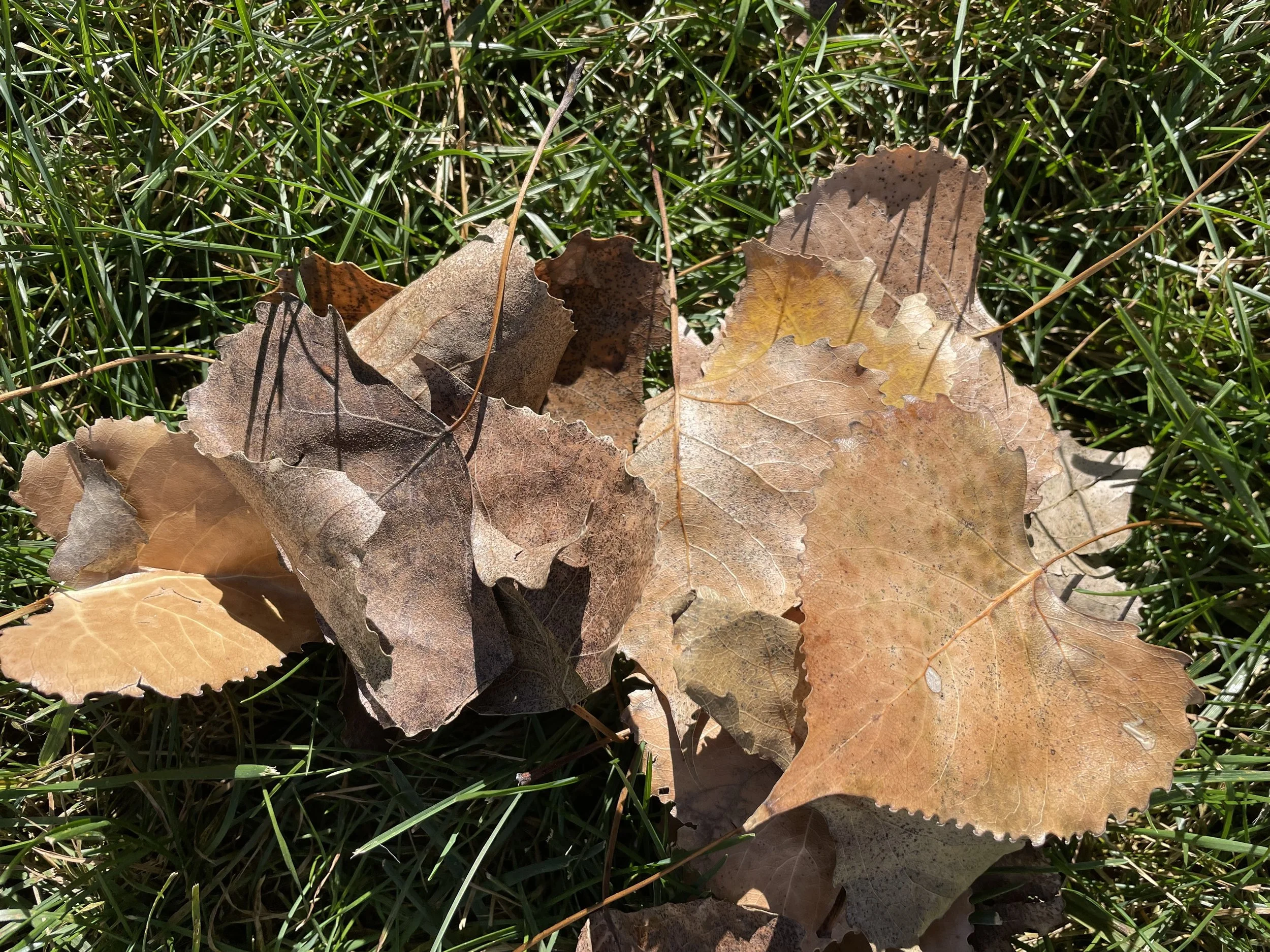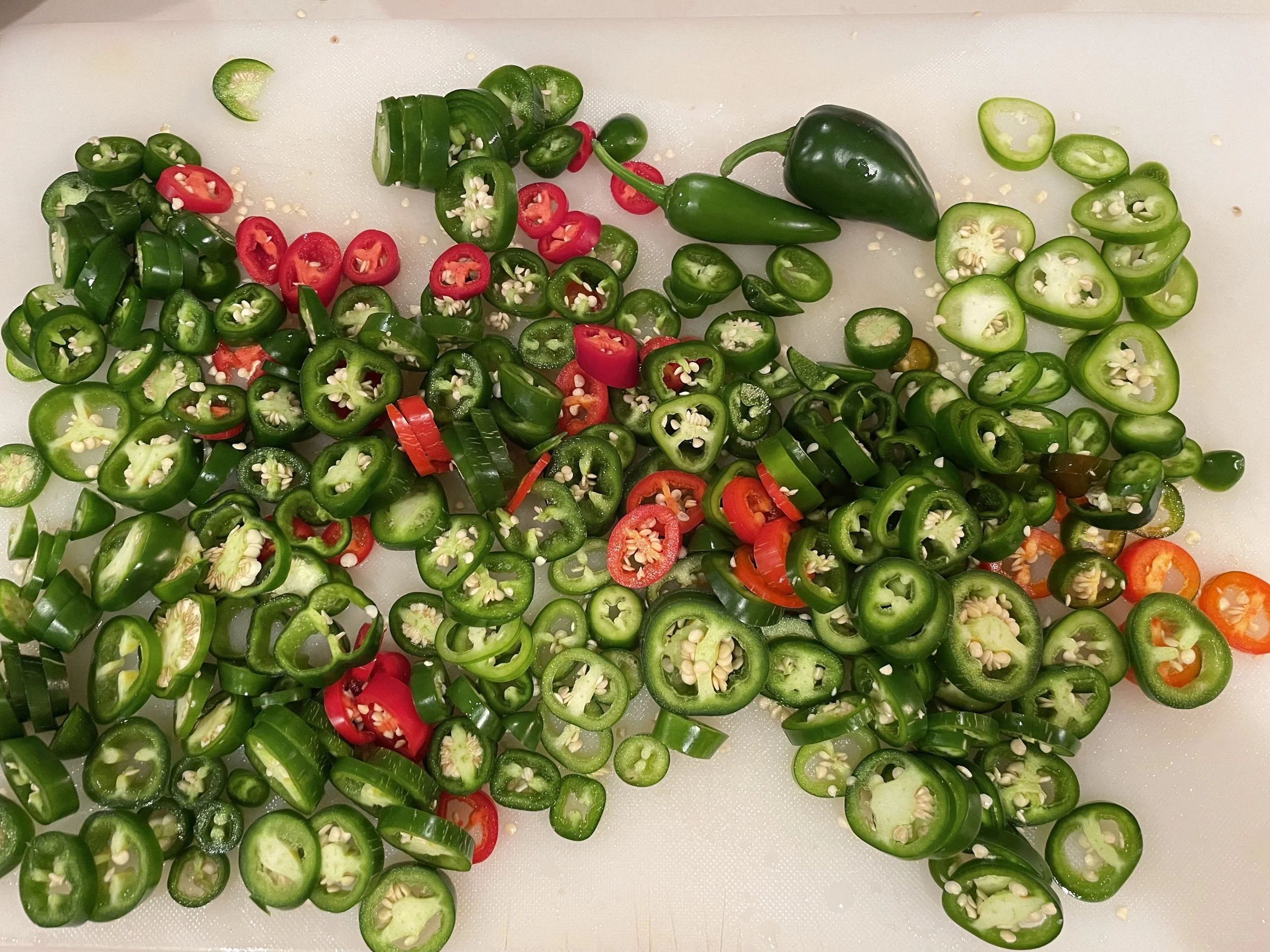October Garden Checklist: Winterize & Plant Garlic
Frost is on the horizon, but there's still time to prep your garden for a successful spring! Winterizing your garden and planting garlic are two key tasks you don’t want to overlook.
Before we dive into winterizing your garden, let’s talk about garlic! It’s one of the easiest crops to grow – plant it now, and it will thrive with little effort.
For a quick guide on how to plant garlic, check out my short blog post here.
In our area, I usually plant my garlic in late October or early November, and it’s typically ready to harvest by early July.
This past week, we planted three garlic varieties in a client’s garden:
Elephant garlic (the HUGE one), Silverskin garlic (a softneck variety), and Music garlic (a hardneck variety that thrives in colder climates).
1. The Importance of Soil Health in Winterizing Your Garden
The main reason to winterize your garden is to protect your soil. Harsh conditions, erosion, leaching, and other factors can be hard on the soil. In nature, it is rare to see bare, exposed soil; plants quickly cover any open patches. Additionally, nature mulches the soil every fall before winter. This not only offers a layer of protection but also adds organic matter that will decompose and enrich the soil.
Winterizing your garden will also protect your perennials and any overwintered crops, like garlic and carrots.
2. Different Steps and Methods for Winterizing Your Garden
First, harvest all the remaining crops on your plants! I leave my tomatoes in the ground until the frost. I pull any fully formed fruit to ripen indoors. While it can take a while and they won’t taste as good as sun-ripened tomatoes, they’re still better than store-bought.
The second step is to decide whether to remove all the old plants or leave them to benefit the beneficial insects. Personally, I remove all dead plants from my front garden, but in my backyard, I cut back the old plants and leave them on the ground to slowly decompose over the winter. This lazy method of composting is called “cut and drop.”
Third, choose a cover crop or mulch.
A cover crop, also known as green manure, can significantly benefit your soil by protecting it and adding organic matter when turned under. There are many cover crops available, so rotating them is a good idea, as different crops contribute different nutrients.
Mulch is my preferred way to protect my gardens!
There are many options available:
Leaves: Gather and shred your leaves to create a fantastic organic mulch! They are typically free from pesticides, herbicides, and other weed seeds, and best of all, they’re free! It doesn’t get much better than that!
Grass Clippings: This is another excellent option for mulch, and it’s a resource right at your fingertips. Just make sure your grass hasn’t been sprayed with harsh chemicals, as this could add unwanted substances to your garden soil.
Straw: Straw is versatile and useful in the garden, provided it’s free from weed seeds or chemicals. I use straw on garden pathways because I love the color and clean look it provides.
Hay: If you decide to use hay as mulch, ensure it’s free from herbicides, other chemicals, and seeds.
Wood Chips: When using wood chips, be cautious to choose non-diseased wood. It’s best to use the entire tree—branches and leaves shredded—not just sawdust. Keep the wood chips on the surface; mixing them deep into the soil isn’t recommended. This topic might deserve a future blog post!
Leaves make excellent mulch, and most of us have plenty of them in the fall!
3. Now that you’ve winterized your garden, what’s next?
Rest: Take a moment to enjoy the end of the season. Rest is part of growth, both for you and your garden. So, take the time to recharge!
Plan for Next Season: Once you’ve rested, start thinking about your spring garden! Consider any changes you want to make to your garden space. Look over your notes from previous years to see which plants and seeds you want to grow this year. Now is also a good time to order seeds and plan your seedlings. You can check out any new varieties you might want to try in the upcoming season.
Composting: Don’t forget about composting during the cold months! You can continually add organic matter to your compost bin, which will enrich your soil come spring. This is an excellent way to ensure your garden is healthy and thriving when the growing season returns.
And now a few pictures from this month:
Lots of jalapeño and poblano peppers this season
I pickled them, and they’re soooo good in sandwiches and Mexican meals!
Hi there, beautiful Calendula!
These flowers are such a bright spot in the garden. I haven’t explored their medicinal uses much, but they’ve definitely been a lovely addition to the space.
I love heading out to the garden and coming back with bowls full of fresh, homegrown food.
There's nothing quite like it!
Figs are an amazing addition to any yard!
We’ve been enjoying fresh figs for weeks, and they’re absolutely worth the wait. While they can take their time to ripen, the payoff is incredible – there’s truly nothing like the sweet, rich flavor of homegrown figs.
I've been presenting a sprouts and microgreens class around the Northland area this fall.
They're such a great crop to grow indoors during the winter months, especially if you have limited space!
Wishing you a wonderful fall! Keep growing and keep enjoying your homegrown food!








